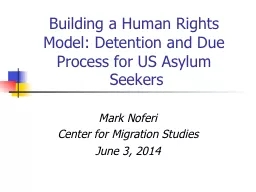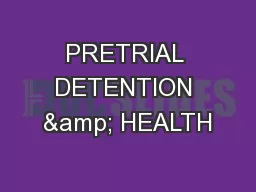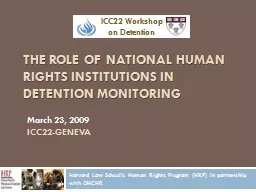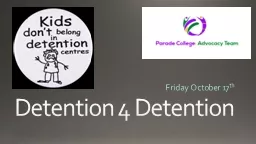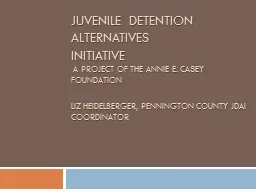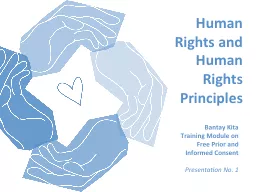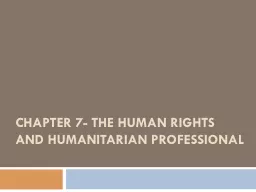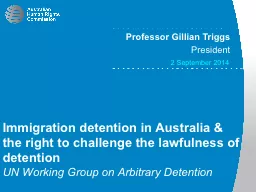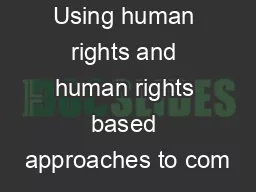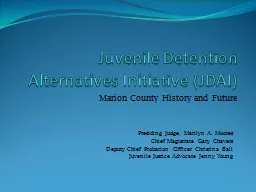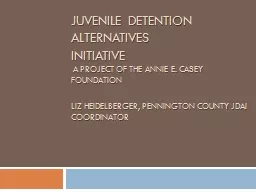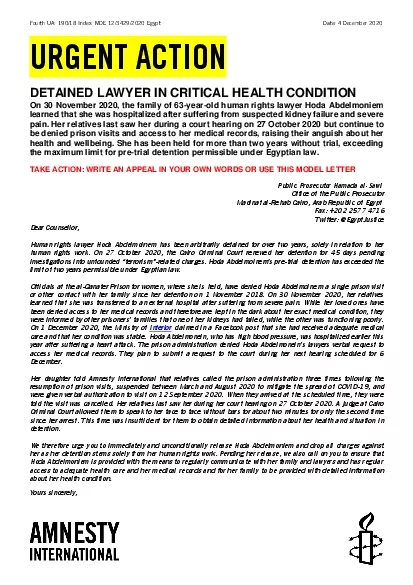PPT-Building a Human Rights Model: Detention and Due Process fo
Author : yoshiko-marsland | Published Date : 2016-03-20
Mark Noferi Center for Migration Studies June 3 2014 Overview Overview Current US Detention amp DP for Asylum Seekers Human Rights Standards UNHCR etc Recommendations
Presentation Embed Code
Download Presentation
Download Presentation The PPT/PDF document "Building a Human Rights Model: Detention..." is the property of its rightful owner. Permission is granted to download and print the materials on this website for personal, non-commercial use only, and to display it on your personal computer provided you do not modify the materials and that you retain all copyright notices contained in the materials. By downloading content from our website, you accept the terms of this agreement.
Building a Human Rights Model: Detention and Due Process fo: Transcript
Download Rules Of Document
"Building a Human Rights Model: Detention and Due Process fo"The content belongs to its owner. You may download and print it for personal use, without modification, and keep all copyright notices. By downloading, you agree to these terms.
Related Documents

